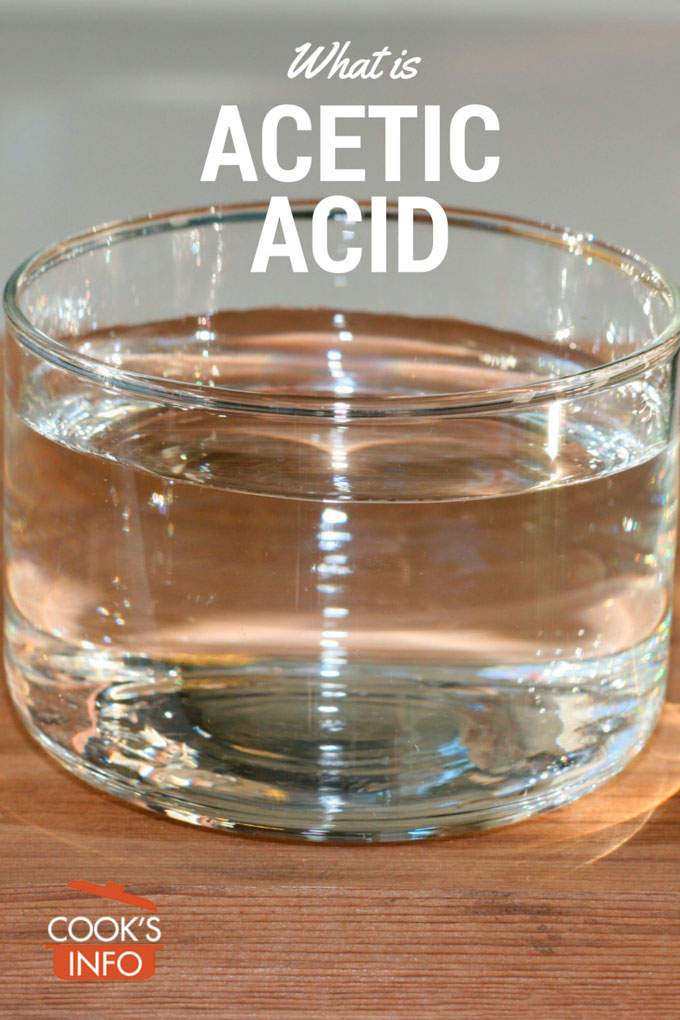
Acetic Acid / © CooksInfo
Acetic acid (aka ethanoic acid) is an odourless, colourless carboxylic acid.
Pure acetic acid is clear with no colour. The smell is very irritating to the nose. The liquid is extremely corrosive to skin and it is not safe to consume. Acetic acid is very sour in taste even in diluted quantities.
Acetic acid production
Acetic acid results when wine or cider are allowed to ferment. First, alcohol is produced and then if fermentation is allowed to continue further, acetic acid. The bacteria that causes it is called acetobacter.
Uses for acetic acid
Pure acetic acid is used industrially. When it is used in combination with cellulose it makes cellulose acetate, which film and rayon are made from. Aspirin (acetylsalicylic acid) is made from acetic acid and salicylic acid.
When diluted, acetic acid is called “vinegar.” The acid is what gives vinegar both its sharp pungent smell and sour taste. Most commercial, food grade vinegars these days contain between 4 to 8 % acetic acid. Agricultural use vinegars can have percentages of around 15 to 20%. For home canning purposes, be sure to use a vinegar 5% in strength or higher, unless a modern, lab-tested recipe calls for one lower in strength.
Acetic acid has antibacterial and antifungal properties.
Chemical properties
Acetic acid will freeze at 16.7 C (62 F) and boil at 118°C (244 F.)
Its chemical formula is CH3COOH.
When added to water, it loses a hydrogen ion: CH3COOH + H2O → CH3COO– + H+ + H2O
History Notes
Acetic acid was first isolated at the start of the 1700s by distilling vinegar.
Language Notes
The name, “acetic”, comes from the Roman word for vinegar, which was “acetum“.

